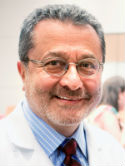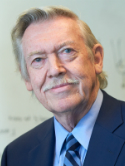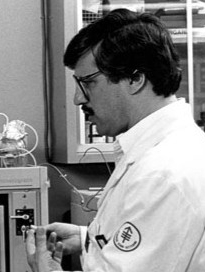Constitutive production of leukemia differentiation, colony-stimulating, erythroid burst-promoting, and pluripoietic factors by a human hepatoma cell line: Characterization of the leukemia differentiation factor Journal Article
| Authors: | Gabrilove, J. L.; Welte, K.; Lu, L.; Castro-Malaspina, H.; Moore, M. A. S. |
| Article Title: | Constitutive production of leukemia differentiation, colony-stimulating, erythroid burst-promoting, and pluripoietic factors by a human hepatoma cell line: Characterization of the leukemia differentiation factor |
| Abstract: | Conditioned medium (CM) obtained from a human hepatoma cell line, SK-HEP-1, contains colony-stimulating factors (CSFs) active on murine and human bone marrow-derived granulocyte and macrophage colony-forming units (CFU-GM) and a factor capable of inducing granulocyte-macrophage differentiation (GM-DF) of murine myelomonocytic leukemic cells WEHI-3B(D+) and human promyelocytic leukemic cells HL-60 when assayed in semisolid agar cultures. The human active granulocyte-macrophage colony-stimulating factor (GM-CSF) for day 7 CFU-GM and the GM-DF for WEHI-3B(D+) and for HL-60 are not separable by acrylamide agarose column chromatography, eluting at an apparent molecular weight between 20,000 and 35,000 daltons, or by isoelectric focusing (isoelectric point, pH 5.4). In addition, SK-HEP-1 CM contains erythroid burst-promoting activity (BPA) and a factor that promotes the growth of human mixed colonies. SK-HEP-1 cells, which grow as an adherent monolayer, appear not to be endothelial or monocytic in origin since by immunofluorescent staining they are negative for Ia (HLA-DR), monocyte antigen 1 and 2, lysozyme, and factor VIII-related antigen. Positive immunofluorescent staining for keratin and fibronectin suggests the possibility that SK-HEP-1 is an epithelial cell line. Constitutive production of GM-DF as well as othe hematopoietic activities including GM-CSF, erythroid BPA, and an activity that promotes the growth of human mixed colony progenitors by a human epithelial tumor cell line, SK-HEP-1, suggests that this cell line is a valuable resource for both large-scale production of these factors and the cloning of the gene(s) that code for these regulators. |
| Keywords: | leukemia; human cell; in vitro study; liver; cell culture; differentiation; colony stimulating factor; hepatoma cell; burst forming unit e; human; priority journal |
| Journal Title: | Blood |
| Volume: | 66 |
| Issue: | 2 |
| ISSN: | 0006-4971 |
| Publisher: | American Society of Hematology |
| Date Published: | 1985-08-01 |
| Start Page: | 407 |
| End Page: | 415 |
| Language: | English |
| DOI: | 10.1182/blood.v66.2.407.407 |
| PUBMED: | 2990610 |
| PROVIDER: | scopus |
| DOI/URL: | |
| Notes: | Article -- Export Date: 26 October 2021 -- Source: Scopus |
Altmetric
Citation Impact
BMJ Impact Analytics
MSK Authors
-
 333
333Castro-Malaspina -
 549
549Moore -
 122
122Gabrilove -
 77
77Welte
Related MSK Work


